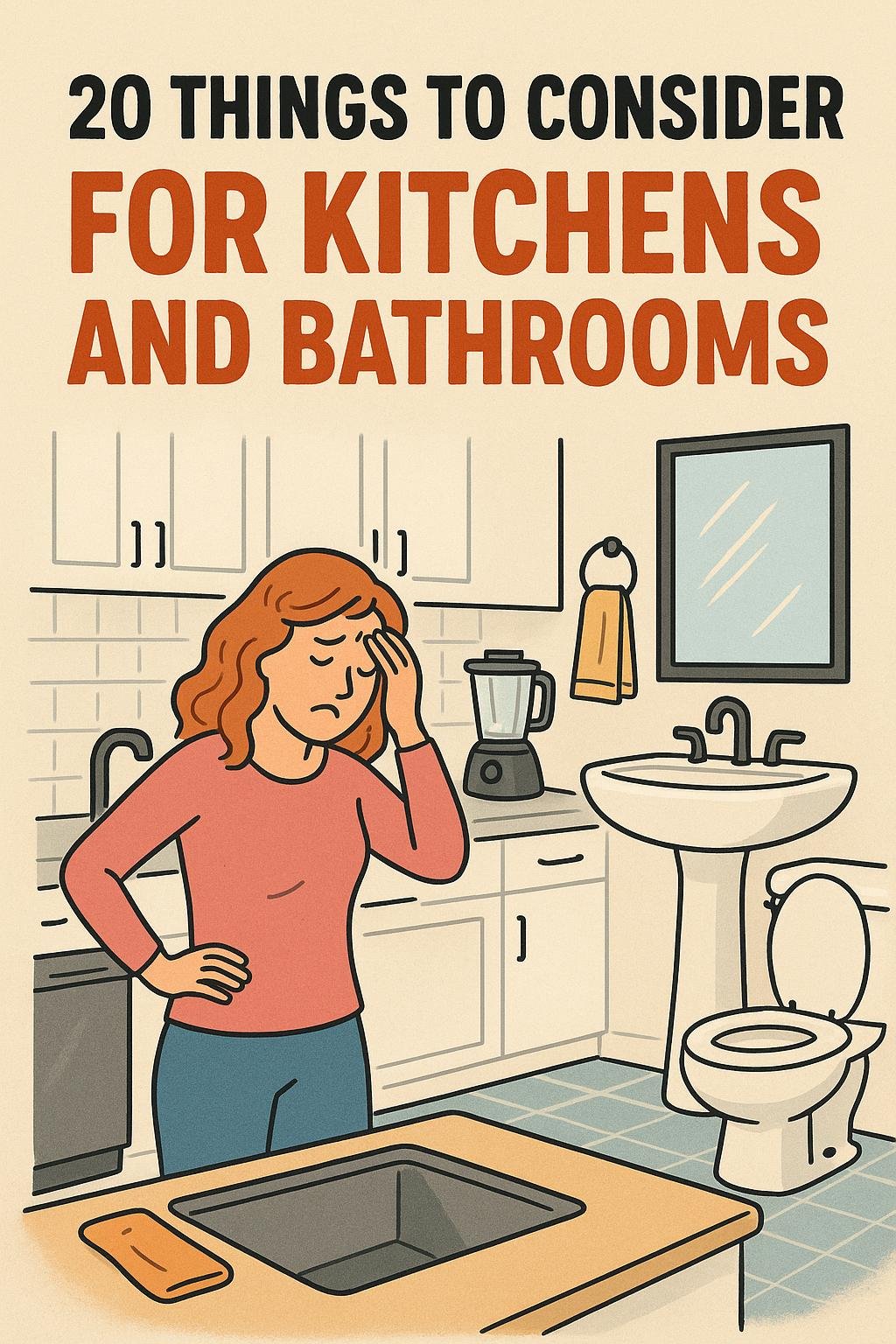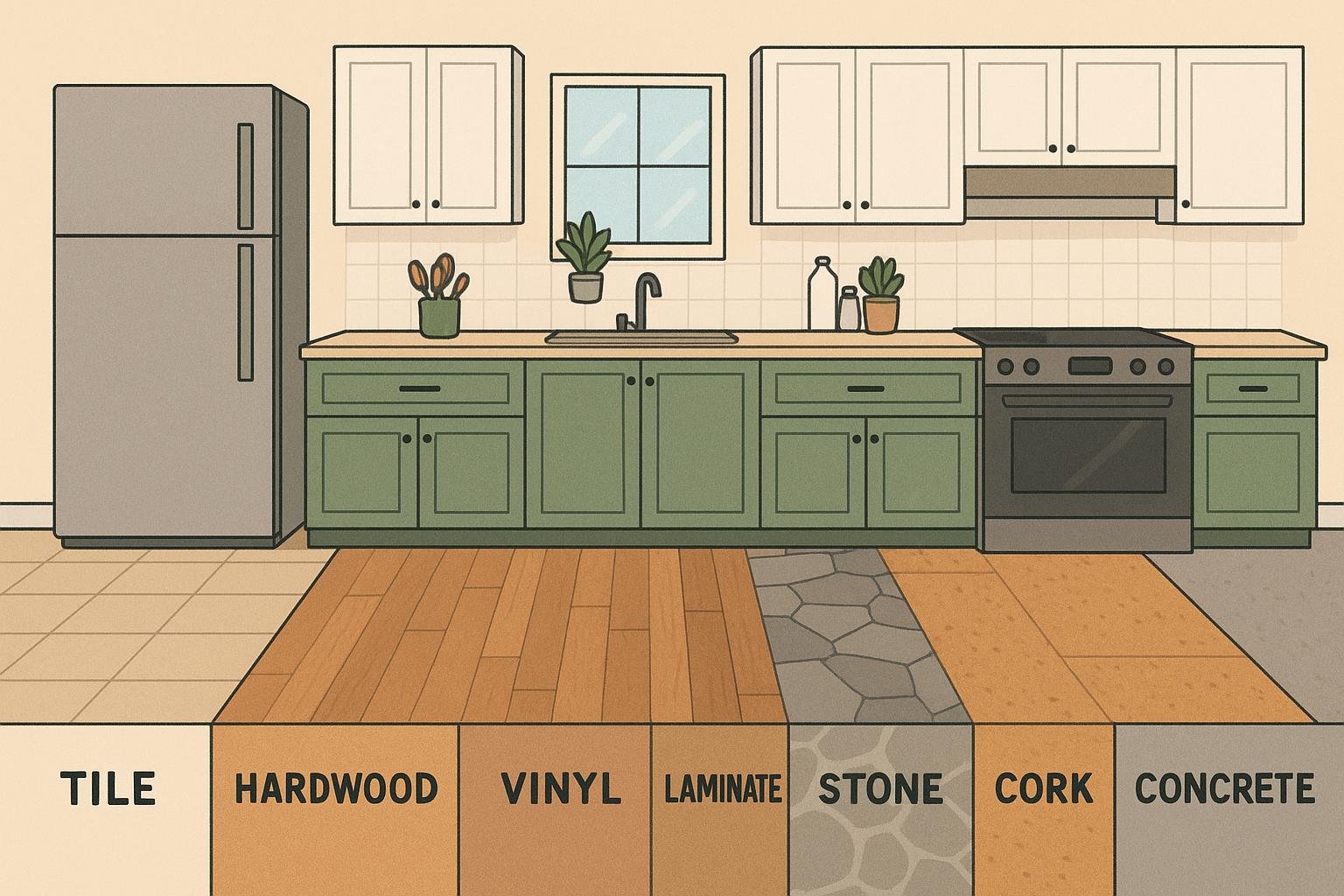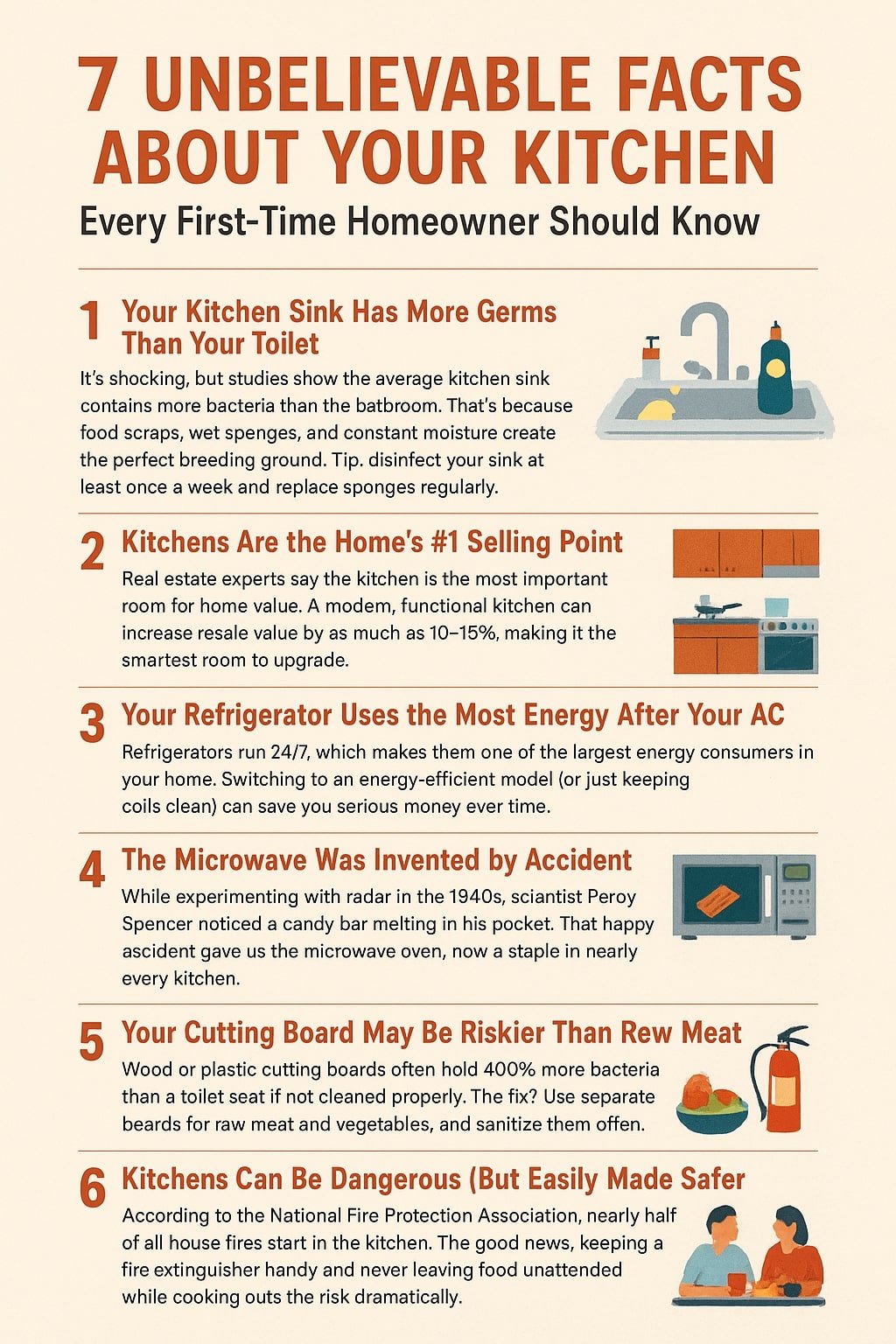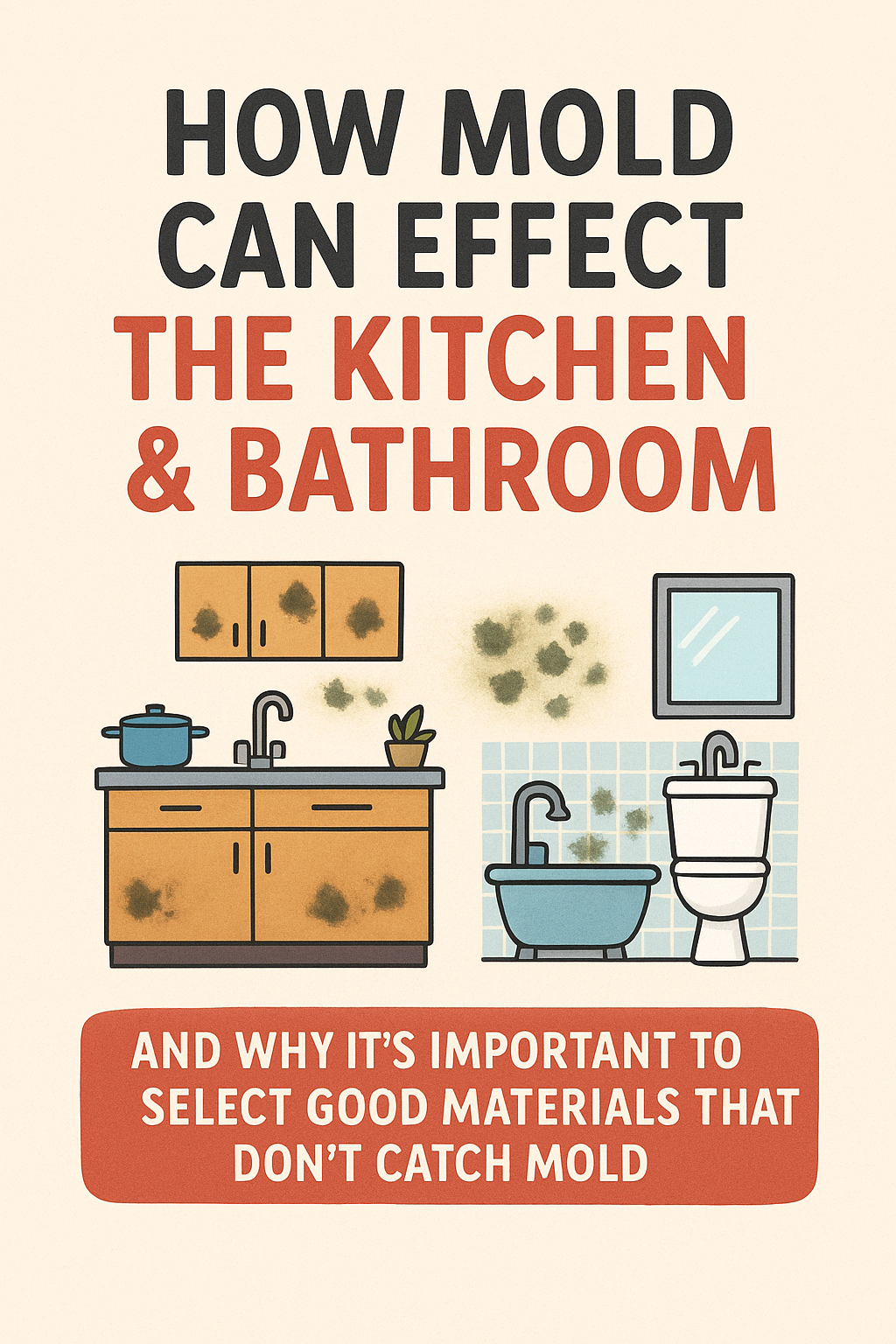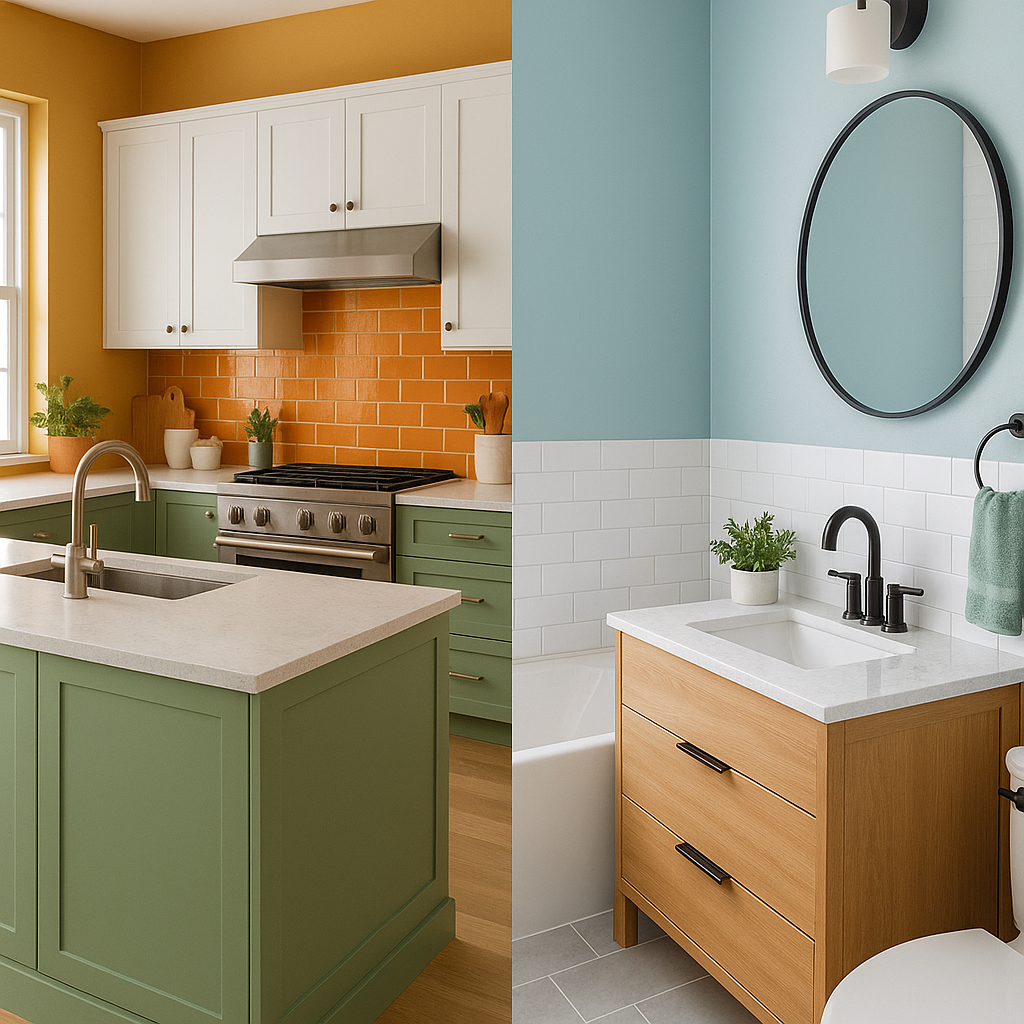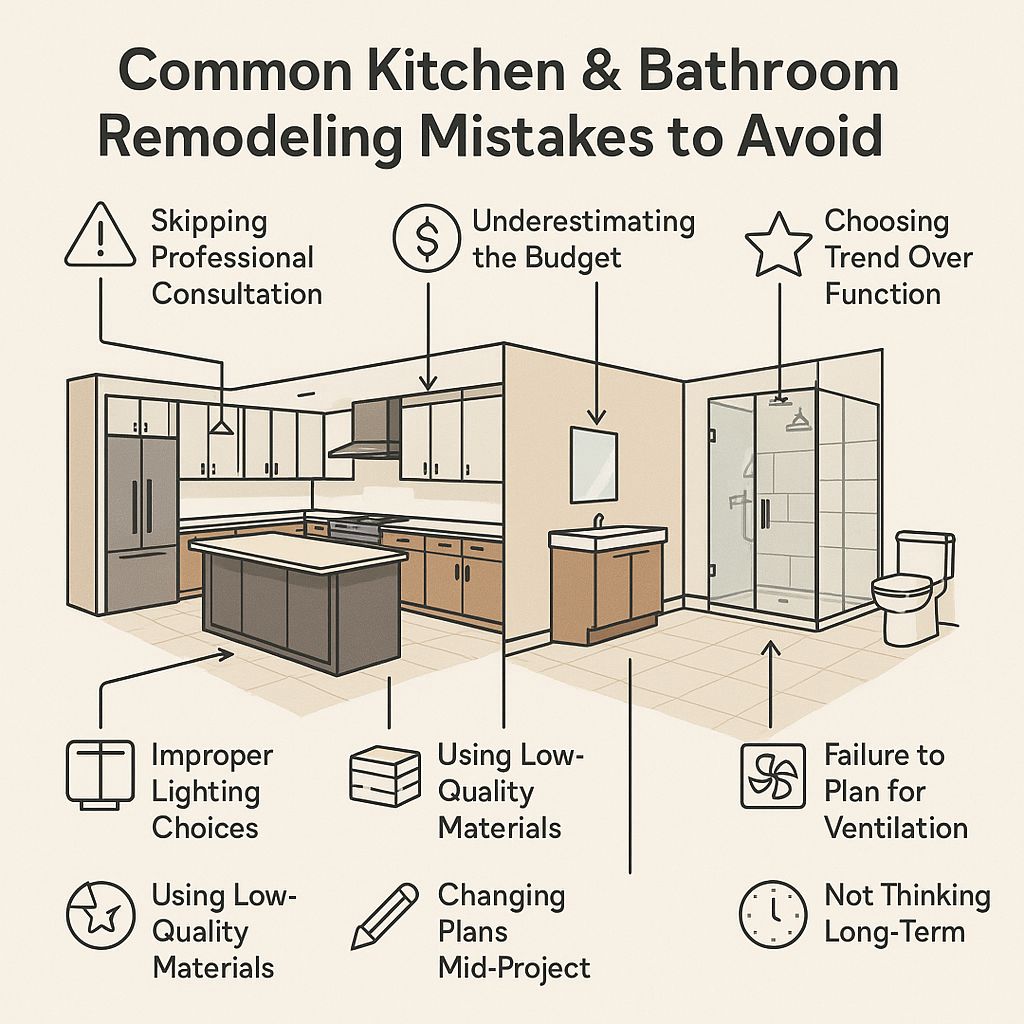Okay, so let’s talk about mold. Yep, that weird fuzzy stuff that looks like it belongs on an old sandwich you forgot in your car three weeks ago. Gross, right? Now imagine that vibe happening in your kitchen or bathroom the two rooms you actually need to be clean.
Mold is basically the ultimate party crasher. It shows up uninvited, spreads everywhere, and ruins the whole vibe. Worse, it doesn’t even bring snacks it just brings weird smells, ugly stains, and possibly some health issues. Let’s break down why mold is the absolute worst, and why picking the right materials for your kitchen and bathroom is like setting up the perfect bouncer at the door: no nasty guests allowed.
Mold 101: The Sneaky Squatter
So, what even is mold?
Think of it like tiny plants, except instead of growing in soil, they grow on your walls, floors, tiles, and grout. Mold loves three things:
1. Moisture – Bathrooms and kitchens are like mold’s dream Airbnb.
2. Warmth – Basically, any place that isn’t Antarctica.
3. Food – No, not your leftovers. It eats microscopic dust, soap scum, and the stuff hiding in cracks.
The problem is, once it shows up, mold spreads faster than bad gossip on Instagram.
Why Mold Sucks in the Kitchen 🍝
Your kitchen is where the magic happens: late-night ramen, Sunday pancakes, TikTok cooking experiments. But add mold into the mix, and suddenly that cozy space turns into a horror movie.
• Gross smells: Imagine trying to cook pasta in a kitchen that smells like an old basement. Appetite = gone.
• Food contamination: Mold spores can float in the air and land on your food. Nothing like a little fungus garnish on your sandwich.
• Ruined materials: Cabinets, countertops, even drywall can get moldy and start breaking down. That’s not just ugly—it’s expensive.
Basically, mold in your kitchen is the opposite of “fine dining.”
Why Mold Sucks in the Bathroom 🚿
Okay, bathrooms are like mold’s natural habitat. Warm showers? Steamy mirrors? Splashes of water everywhere? It’s paradise for spores.
• Black grout lines: You know that creepy dark line between tiles that refuses to scrub away? Yep, that’s mold.
• Slippery surfaces: Mold can make tiles slick. Congrats, your bathroom just became an ice rink.
• Smelly vibes: Bathrooms already fight an uphill battle with odors—mold just makes it worse.
• Health drama: Breathing in mold spores while brushing your teeth? Not exactly the “fresh start” your morning deserves.
Health Stuff: Not Just Allergies
Alright, real talk: mold can mess you up. We’re talking:
• Allergies (sneezing, itchy eyes, runny nose)
• Asthma flare-ups
• Headaches
• In serious cases, respiratory issues
So yeah, it’s not just about being gross—it’s about keeping your lungs happy too.
The Secret Weapon: Good Materials 💪
Here’s the fun part. You don’t have to live in fear of mold if you choose the right stuff for your kitchen and bathroom. Think of materials like your home’s armor. Some are weak (sorry, cheap drywall), while others are basically superheroes.
What you want:
• Porcelain or ceramic tiles: Mold can’t really sink its teeth in here. Easy to clean, looks sleek.
• Quartz countertops: Unlike porous stone, quartz doesn’t give mold any hidey-holes.
• Solid-surface materials: Stuff like Corian or high-quality laminates fight off moisture like champs.
• Good ventilation systems: Not a “material,” but essential. Exhaust fans are like your room’s personal bodyguard.
What you DON’T want:
•Wood in super wet spots (sorry, trendy wood bathroom floors).
•Cheap, porous grout that soaks up water like a sponge.
•Random “budget” materials that might save cash now but cost triple later when you’re scrubbing black stains.
Mold Prevention = Chill Living
At the end of the day, fighting mold is about making life easier. Imagine:
•A bathroom that always smells fresh.
•A kitchen that stays clean no matter how many spaghetti sauce accidents happen.
•Not needing to scrub weird fuzzy spots on a Saturday morning.
By choosing mold-resistant materials, you’re basically giving yourself more free time—and fewer excuses to put off cleaning.
Final Word
Mold is like that one toxic ex it’s clingy, messy, and just won’t go away. But if you invest in good-quality, mold-resistant materials for your kitchen and bathroom, you can ghost it for good. Your health, your vibe, and your future self will all thank you.
So yeah, skip the cheap stuff, get the good materials, and keep your kitchen and bathroom fungus-free. Trust me—20-year-old you might not care now, but 30-year-old you is gonna be so grateful.


